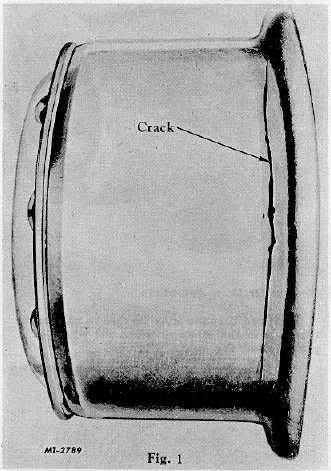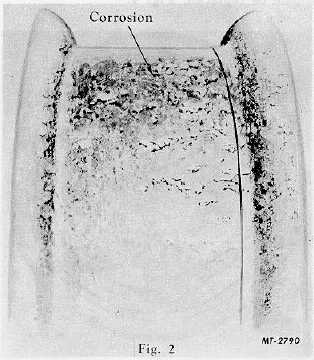|
| |
TRUCK SERVICE MANUAL
TM 5-4210-230-14&P-1
WHEELS, RIMS, TIRES
CHAPTER 1-WHEELS, RIMS
Road
failures
are
generally
caused
by
either
overloading or oversight in the maintenance program. To
save hours of downtime a simple visual check of the following
components should periodically be made.
Cracked Rims
Cracked rims or flanges are a result of metal fatigue or
overloading, thus periodic inspections should be made to
assure safe operations, Fig. 1.
Fig. 1
Rim Corrosion
Corrosion is occasionally found on both tubed and
tubeless type rims, Fig. 2. If the corrosion is minor a wire
brushing or buffing' will clean satisfactorily. The tire mounting
surfaces of the rim can then be painted with a good quality
frame enamel or coated with a non-water suspended
lubricant. If corrosion is excessive, fatigue cracks may have
developed in the rim base or the ring may not be
seating in the gutter. The wheel in this case should be
replaced.
Fig. 2
Damaged Or Cracked Rings
Broken or cracked rings are generally caused by rough
use of tire tools or improper initial seating in the rim gutter.
Bent or sprung rings are caused by rough or improper
removal, and cannot be properly reformed to seat accurately
in the rim gutter. They should be replaced, Fig. 3. When
removing the rings they should be worked off in small steps,
starting at one point and gradually working in one direction
around the entire circumference.
Fig. 3
CTS-2167N Page 3
PRINTED IN UNITED STATES OF AMERICA
|



